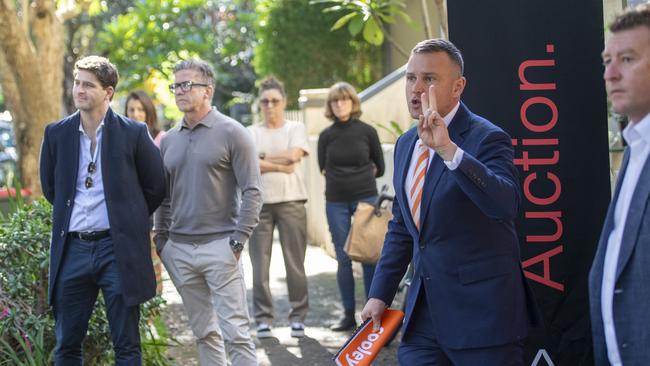Prices for detached homes soar past units
Homeowners are opting to secure a house and a backyard despite capital city house prices soaring and the gap between detached homes and units widening since the pandemic.

Homeowners are still opting to secure a house and a backyard despite capital city house prices soaring to a median of $1m, with the gap between detached homes and units soaring since the pandemic.
Sydneysiders are paying the largest premium for houses in the country, bucking the trends of Australia’s largest capital cities, where the gap to unit prices has stabilised or shrunk in recent years, according to new research by housing researcher PropTrack for The Australian.
Property prices soared as a result of the 2020 pandemic as people accessed savings and cheap loans, pushing the price difference between houses and units in the nation’s five largest capital from an average of 29 per cent to 52 per cent.
It comes as prices for detached homes in the nation’s combined capital cities hit $1m last month.
Housing Industry Association chief economist Tim Reardon said the pandemic fundamentally changed what Australians expected from their home, with homeowners valuing greater space and modern amenity, as reflected in renovation spend
“This partly reflects the impact of the pandemic and change in work from home arrangements; people are spending more time at home and are seeking more space as each resident requires their own work from home area,” Mr Reardon said.
Sydney house buyers are paying an 86 per cent premium compared to those choosing units, despite the median price of a detached dwelling now falling shy of $1.5m.
Mr Reardon said new house building in Perth was now outpacing that of Sydney, with the shortage putting pressure on the established housing market.
He said he expected units would follow a similar trend in coming years, with half the volume of new apartments being commenced compared with a decade ago.
“The price of a new house and land package is around $600,000 more in Sydney than other capital cities, due to the price of land,” he said.
“Because the price of a new block of land is now more than the cost of the average house in Sydney five years ago, buying an established home has become increasingly viable for newly formed households.”
The smallest gap among the major capitals is in Melbourne, where subdued market has seen the gap increase by $100,000 in five years, taking it from 24 per cent to 39 per cent.
In contrast, each of the mid-sized capitals have recorded a more than doubling in the price difference between the two dwelling types.
It is a reflection of the exceptionally strong performance of the three markets over the past five years.
Brisbane and Adelaide have both recorded reductions in the price gap between mid-to-late 2022 and today.
REA Group senior economist Anne Flaherty said the cost of three in five newly built apartments in the Queensland capital exceeded $1m because of construction and labour costs, which was making the established market more attractive to buyers. “I wonder if we might hit a bit of a turning point or a slowdown in the trend of the gap rising, given the kinds of homes being built at the moment,” she said.
Perth prices are moderating, with houses now $260,000 more than the typical unit.






To join the conversation, please log in. Don't have an account? Register
Join the conversation, you are commenting as Logout